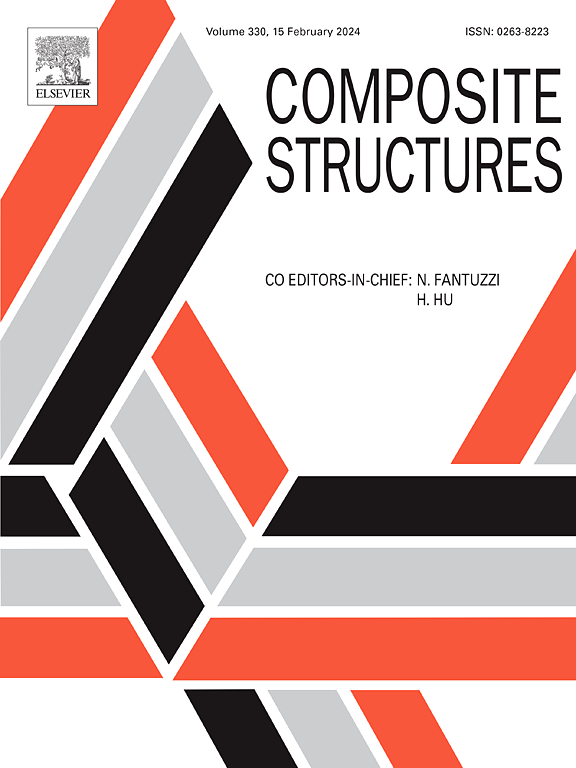Constructing continuous epoxy interlocking teeth on magnesium alloy surface using laser engraving and resin pre-coating for stronger adhesive bonding joints
IF 6.3
2区 材料科学
Q1 MATERIALS SCIENCE, COMPOSITES
引用次数: 0
Abstract
This study focused on optimizing the adhesive interfaces between Magnesium Alloy (MA) and Carbon Fiber-Reinforced Polymer (CFRP) composites using laser engraving treatment and Resin Pre-Coating (RPC). This synergistic approach improved the bonding conditions and constructed continuous epoxy interlocking teeth by introducing vertical gaps between annular array units. The MA-CFRP composite exhibited a noticeable 126.1 % improvement in its bonding strength following laser engraving of solid circles (0.16 mm in diameter) and RPC treatment. Moreover, the initial debonding failure of the MA surface shifted into cohesive failure of epoxy adhesive and CFRP panel delamination failure. The combination of the two techniques presents a novel and effective strategy to enhance the bond strength of MA-CFRP joints, exhibiting for industrial manufacturing of high-performance MA-CFRP composites.
在镁合金表面采用激光雕刻和树脂预涂法制备连续环氧互锁齿,使粘接接头更牢固
采用激光雕刻和树脂预涂(RPC)技术对镁合金(MA)与碳纤维增强聚合物(CFRP)复合材料的粘结界面进行了优化。这种协同方法改善了粘合条件,并通过在环形阵列单元之间引入垂直间隙来构建连续的环氧树脂互锁齿。经过激光雕刻实心圆(直径0.16 mm)和RPC处理后,MA-CFRP复合材料的结合强度显著提高了126.1%。此外,MA表面的初始脱粘破坏转变为环氧胶粘剂的内聚破坏和CFRP板的分层破坏。两种技术的结合为提高MA-CFRP接头的结合强度提供了一种新颖有效的策略,为高性能MA-CFRP复合材料的工业化制造提供了基础。
本文章由计算机程序翻译,如有差异,请以英文原文为准。
求助全文
约1分钟内获得全文
求助全文
来源期刊

Composite Structures
工程技术-材料科学:复合
CiteScore
12.00
自引率
12.70%
发文量
1246
审稿时长
78 days
期刊介绍:
The past few decades have seen outstanding advances in the use of composite materials in structural applications. There can be little doubt that, within engineering circles, composites have revolutionised traditional design concepts and made possible an unparalleled range of new and exciting possibilities as viable materials for construction. Composite Structures, an International Journal, disseminates knowledge between users, manufacturers, designers and researchers involved in structures or structural components manufactured using composite materials.
The journal publishes papers which contribute to knowledge in the use of composite materials in engineering structures. Papers deal with design, research and development studies, experimental investigations, theoretical analysis and fabrication techniques relevant to the application of composites in load-bearing components for assemblies, ranging from individual components such as plates and shells to complete composite structures.
 求助内容:
求助内容: 应助结果提醒方式:
应助结果提醒方式:


